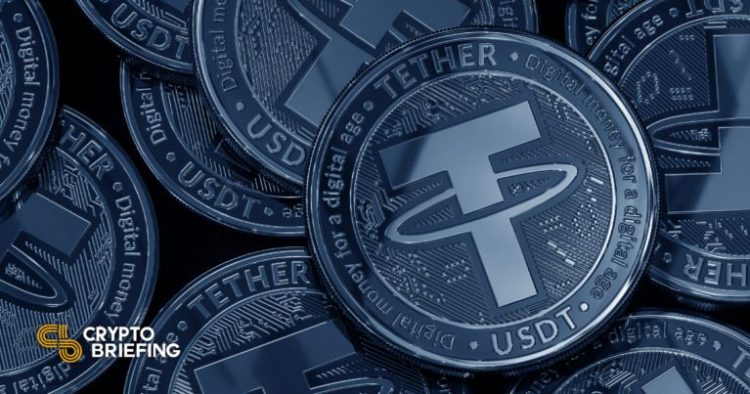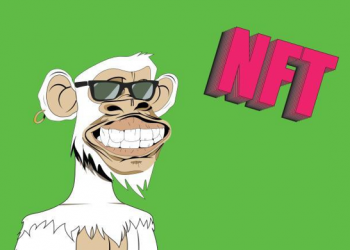Key Takeaways
- Tether has shrunk its commercial paper holdings to zero.
- U.S. Treasury Bills now make up the majority of Tether’s reserves.
- So far, Tether’s increased transparency hasn’t helped it shed rumors over the state of its reserves.
Share this article
Tether has successfully ditched the entirety of its commercial paper holdings in favor of U.S. Treasury Bills, which could now make up approximately 56.3% of the company’s total reserves.
“The Most Secure Reserves”
Tether has made good on its promise to drop commercial paper.
The leading stablecoin issuer announced today that it had eliminated commercial paper from its reserves and replaced the funds with U.S. Treasury Bills. According to the company, the move was made in an effort to back its USDT tokens with “the most secure reserves in the market.”
Tether’s plan to cut its commercial paper reserves was initially announced in May. Since then, the company has consistently brought down its commercial paper reserves every two months, often several billions of dollars at a time.
Stablecoins are cryptocurrencies designed to remain at parity with a government-issued currency such as the U.S. dollar or the euro. Tether is the biggest stablecoin issuer in the world; with a market capitalization of $68.3 billion, USDT is currently the third largest coin after BTC and ETH. Rival centralized stablecoins USDC and BUSD come in fourth and seventh, respectively, with market capitalizations of $45.6 billion and $21.6 billion.
Tether’s website currently indicates that almost 80% of the company’s reserves are made of cash equivalents and short-term deposits. Of these cash equivalents, 12.88% are in money market funds, 10.25% are bank deposits, 5.66% take the form of reverse repurchase agreements, and 0.75% are non-U.S. Treasury Bills. Meanwhile, U.S. Treasury Bills make up 54.57% of Tether’s cash equivalents. The remaining 15.89% is attributed to commercial paper. Once the website is updated to reflect Tether’s new reserve composition, the company’s U.S. Treasury Bills may make up to 70.46% of its cash equivalent reserves—or approximately 56.3% of its total reserves.
Does It Matter?
Tether’s latest report is part of the stablecoin issuer’s ongoing effort to increase the transparency of its proceedings after being hit with multiple waves of fear, doubt, and uncertainty surrounding the state of its reserves. Nicknamed “Tether truthers” by the rest of the crypto industry, critics have repeatedly argued that, by its sheer size, the company posed an existential threat to crypto and the wider financial system.
Concerns around Tether have been hard to alleviate. From 2017 to 2022, the company has had its reserves audited ten times by six different agencies, but this has done little to quench negative rumors. In August, Tether vowed to go through a full audit after an article in the Wall Street Journal criticized the company for not having yet done an “audit that’s akin to a corporate colonoscopy.”
While USDT has already lost its $1 peg in the past, the token has always quickly regained its value, even in high-pressure instances. During the market turmoil caused by Terra’s implosion in May, Tether was able to redeem more than $8 billion worth of USDT without suffering any major problems.
Will evermore increasing transparency and full audits be enough for Tether to shed doubts as to the state of its reserves? It hasn’t so far, but one can hope.
Disclaimer: At the time of writing, the author of this piece owned BTC, ETH, and several other cryptocurrencies.
Share this article
The information on or accessed through this website is obtained from independent sources we believe to be accurate and reliable, but Decentral Media, Inc. makes no representation or warranty as to the timeliness, completeness, or accuracy of any information on or accessed through this website. Decentral Media, Inc. is not an investment advisor. We do not give personalized investment advice or other financial advice. The information on this website is subject to change without notice. Some or all of the information on this website may become outdated, or it may be or become incomplete or inaccurate. We may, but are not obligated to, update any outdated, incomplete, or inaccurate information.
You should never make an investment decision on an ICO, IEO, or other investment based on the information on this website, and you should never interpret or otherwise rely on any of the information on this website as investment advice. We strongly recommend that you consult a licensed investment advisor or other qualified financial professional if you are seeking investment advice on an ICO, IEO, or other investment. We do not accept compensation in any form for analyzing or reporting on any ICO, IEO, cryptocurrency, currency, tokenized sales, securities, or commodities.
See full terms and conditions.
Source by cryptobriefing.com











